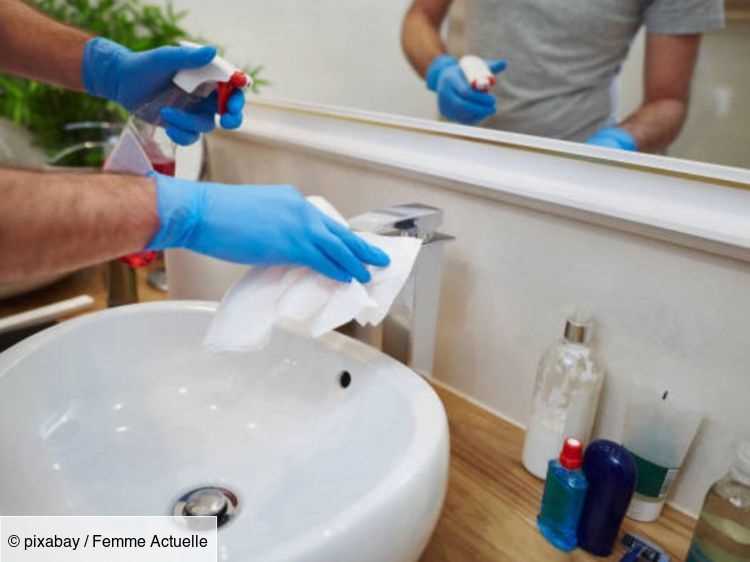Respecting the barrier measures imposed by the government are essential to prevent the spread of the coronavirus. Namely: stay at home (when possible), wash your hands very regularly, cough and sneeze in the crook of your elbow, avoid touching your face and keep distance from others.
But at home too, experts recommend hygiene rules to be followed to avoid contamination. Here are all the tips for cleaning your interior during a pandemic.
How long does the coronavirus survive in the open air?
According to health professionals, the coronavirus would live approximately 3 hours in the open air. But its lifespan is variable depending on the media:
- 24 hours on the carton;
- 4 days on the wood;
- 5 days on the glass;
- 3 days maximum on steel and certain plastics.
The type of surface, but also the ambient temperature or humidity can affect the lifetime of the virus. Although the virus can survive for several hours or even several days, its infectious particles are reduced over time. There is therefore less risk of contagion. However, it is still strongly recommended to regularly clean and disinfect its interior.
Which surfaces should be cleaned first?
Mobile phones, computer keyboards, doorknobs, and even packaging … the Covid-19 virus can potentially contaminate any inert surface in our daily lives.
The objects and surfaces most often handled should be cleaned as a priority:
- Smartphones and tablet screens
- Remote controls and video game controllers
- Door handles
- Computer keyboards and mice
- Countertops and tables
- Switches
- Stair railings
- Faucets
- Basin and sinks …
- Keys
- Pens
- Toilet flush button
- Food packaging and packages
According to National Health Security Agency (HANDLES), all of these surfaces may be contaminated with coronavirus. Strict hygiene rules should therefore be applied to each handling. Wash your hands and disinfect potentially contaminated surfaces.
⋙ Water bottle, gloves, door handles … these everyday objects that we too often forget to clean
How to clean surfaces contaminated with coronavirus? How frequently ?
Commonly used disinfectants are effective against coronavirus. Bleach, 70 ° alcohol and virucidal cleaning products with the standard EN 14 476, remove traces of coronavirus.
Everyday objects must be disinfected after each use. And your hands are no exception. Respect barrier gestures and wash your hands regularly with soap and clear water.
For toilets, taps and toilets must be cleaned, 2 times per day, with bleach diluted to 0.5%.
The same goes for the main rooms of the house (the kitchen, the bedroom or the living room). Household disinfectants based on bleach or chlorine, solvents, 75% ethanol or peracetic acid must be used. Clean these areas 2 times per day.
Attention, it is not recommended to use the vacuum cleaner in order not to create a cloud of dust and potentially viral particles.
The ANSE recommends to favor cooked foods (at 63 ° for 4 minutes). The Covid-19 virus is sensitive to cooking temperatures, this would reduce the risk of food contamination by 10,000.
Clean laundry and textiles
Coronavirus can survive on textiles, so it is recommended that you wash your linens and clothing regularly. For clothes and sheets, wash more than 60 degrees for 10 minutes eradicates the virus.
It is also advisable to change sheets and towels frequently. Bath linen should be washed at 60 ° and for 30 minutes minimum.
Wash the dishes
If you have a dishwasher, choose washing cycles at high temperatures (at least 60 °) to avoid risk of contamination.
Without a dishwasher, it is recommended to soak your dishes in bleach diluted to 0.1% or in dishwashing liquid for a fifteen minutes before carrying out the usual washing.
Read also :
⋙ Spring cleaning: how to clean your house from top to bottom with only 4 products
⋙ Coronavirus: these places to disinfect absolutely to avoid contamination
⋙ Clean or disinfect its interior: what is the difference?
